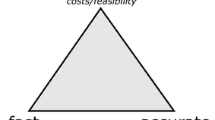Abstract
To assist emergency management planning and prevention in case of hazardous chemical release into the atmosphere, especially in densely built-up regions with large populations, a multi-scale urban atmospheric dispersion model was established. Three numerical dispersion experiments, at horizontal resolutions of 10 m, 50 m and 3000 m, were performed to estimate the adverse effects of toxic chemical release in densely built-up areas. The multi-scale atmospheric dispersion model is composed of the Weather Forecasting and Research (WRF) model, the Open Source Field Operation and Manipulation software package, and a Lagrangian dispersion model. Quantification of the adverse health effects of these chemical release events are given by referring to the U.S. Environmental Protection Agency’s Acute Exposure Guideline Levels. The wind fields of the urban-scale case, with 3 km horizontal resolution, were simulated by the Beijing Rapid Update Cycle system, which were utilized by the WRF model. The sub-domain-scale cases took advantage of the computational fluid dynamics method to explicitly consider the effects of buildings. It was found that the multi-scale atmospheric dispersion model is capable of simulating the flow pattern and concentration distribution on different scales, ranging from several meters to kilometers, and can therefore be used to improve the planning of prevention and response programs.
Similar content being viewed by others
References
Acquesta, A. D., E. Y. Sanchez, A. Porta, and P.M. Jocovkis, 2011: A method for computing the damage level due to the exposure to an airborne chemical with a time-varying concentration. Risk Analysis, 31(9), 1451–1469.
Baik, J. J., S. B. Park, and J. J. Kim, 2009: Urban flow and dispersion simulation using a CFD model coupled to a mesoscale model. J. Appl. Meteor. Climatol., 48, 1667–1681.
Berrouk, A. S., D. E. Stock, D. Laurence, and J. J. Riley, 2008: Heavy particle dispersion from a point source in turbulent pipe flow. Int. J. Multiphase Flow, 34(10), 916–923.
Bowonder, B., and T. Miyake, 1988: Managing hazardous facilities: Lessons from the Bhopal accident. J. Hazard. Mater., 19(3), 237–269.
Chen, B. C., S. H. Liu, Y. C. Miao, S. Wang, and Y. Li, 2013: Construction and validation of an urban area flow and dispersion model on building scales. Acta Meteorologica Sinica., 27(6), 923–941.
Fang, X. Y., and Coauthors, 2004: The multi-scale numerical modeling system for research on the relationship between urban planning and meteorological environment. Adv. Atmos. Sci., 21(1), 103–112, doi: 10.1007/BF02915684.
Ferziger, J. H., and M. Peric, 2001: Computational Methods for Fluid Dynamics. 3rd ed., Springer, 188–202.
Fitch, J. P., E. Raber, and R. R. Imbro, 2003: Technology challenges in responding to biological or chemical attacks in the civilian sector. Science, 302, 1350–1354.
Fu, W., H. Fu, K. Skøtt, and M. Yang, 2008: Modeling the spill in the Songhua River after the explosion in the petrochemical plant in Jilin. Environ. Sci. Pollut. Res., 15(3), 178–181.
Hanna, S. R., O. R. Hansen, M. Ichard, and D. Strimaitis, 2009: CFD model simulation of dispersion from chlorine railcar release in industrial and urban areas. Atmos. Environ., 43, 262–270.
Langner, C., and O. A. Klemm, 2011: A comparison of model performance between AERMOD and AUSTAL2000. J. Air & Waste Manage. Assoc., 61, 640–646.
Li, F. Y., J. Bi, L. Huang, C. S. Qu, J. Yang, and Q. M. Bu, 2010: Mapping human vulnerability to chemical accidents in the vicinity of chemical industry parks. Journal of Hazardous Materials, 179, 500–506.
Li, L., F. Hu, J. Jiang, and X. Cheng, 2007: An application of the RAMS/FLUENT system on the multi-scale numerical simulation of the urban surface layer—A preliminary study. Adv. Atmos. Sci., 24(2), 271–280, doi: 10.1007/s00376-007-0271-y.
Miao, S. G., W. M. Jiang, X. Y. Wang, and W. L. Guo, 2006: Impact assessment of urban meteorology and the atmospheric environment using urban sub-domain planning. Bound.-Layer Meteor., 118, 133–150.
Miao, Y. C., S. H. Liu, B. C. Chen, B. H. Zhang, S. Wang, and S. Y. Li, 2013: Simulating urban flow and dispersion in Beijing by coupling a CFD model with the WRF model. Adv. Atmos. Sci., 30(6), 1663–1678, doi: 10.1007/s00376-013-2234-9.
Miao, Y. C., S. H. Liu, Y. J. Zheng, S. Wang, and Y. Li, 2014: Numerical study of traffic pollutant dispersion within different street canyon configurations. Adv.Meteor., Article ID 458671, doi:10.1155/2014/458671.
Okumura, T., N. Takasu, S. Ishimatsu, S. Miyanoki, A. Mitsuhashi, K. Kumada, K. Tanaka, and S. Hinohara, 1996: Report on 640 victims of the Tokyo subway sarin attack. Annals of Emergency Medicine, 28(2), 129–135.
Santiago, J. L., and F. Martñ, 2008: SLP-2D: A new Lagrangian particle model to simulate pollutant dispersion in street canyons. Atmos. Environ., 42, 3927–3936.
Stage, S. A., 2004: Determination of acute exposure guideline levels in a dispersion model. Journal of the Air & Waste Management Association, 54, 49–59.
Stohl, A., C. Foster, A. Frank, P. Seibert, and G. Wotawa, 2005: Technical note: The Lagrangian particle dispersion model FLEXPART version 6.2. Atmos. Chem. Phys., 5, 2461–2474.
Tewari, M., H. Kusaka, F. Chen, W. J. Coirier, S. Kim, A. A. Wyszogrodzki, and T. T. Warner, 2010: Impact of coupling a microscale computational fluid dynamics model with a mesoscale model on urban scale contaminant transport and dispersion. Atmospheric Research., 96, 656–664.
Thompson, R. S., 1993: Building amplification factors for sources near buildings-a wind-tunnel study. Atmos. Environ., 27A(15), 2313–2325.
Wang, H., J. Sun, S. Fan, and X. Y. Huang, 2013: Indirect assimilation of radar reflectivity with WRF 3D-Var and its impact on prediction of four summertime convective events. J. Appl. Meteor. Climatol., 52(4), 889–902.
Wilson, J. D., and B. L. Sawford, 1996: Review of Lagrangian stochastic models for trajectories in the turbulent atmosphere. Bound-Layer Meteor., 78, 191–210.
Zhang, Z., and Q. Chen, 2007: Comparison of the Eulerian and Lagrangian methods for predicting particle transport in enclosed spaces. Atmos. Environ., 41(25), 5236–5248.
Author information
Authors and Affiliations
Corresponding author
Rights and permissions
About this article
Cite this article
Miao, Y., Liu, S., Zheng, H. et al. A multi-scale urban atmospheric dispersion model for emergency management. Adv. Atmos. Sci. 31, 1353–1365 (2014). https://doi.org/10.1007/s00376-014-3254-9
Received:
Revised:
Accepted:
Published:
Issue Date:
DOI: https://doi.org/10.1007/s00376-014-3254-9




